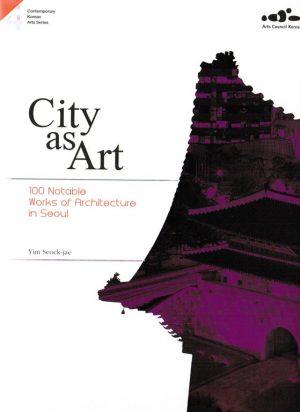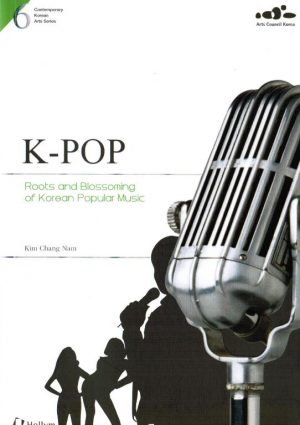Diaspora: Korean Nomadism
$19.50
Diaspora: Korean Nomadism (Contemporary Korean Arts Series #2) is a brief study of international nomads, introducing those who contributed to the development of Korean art. By presenting Korean aesthetic sensibility and artistic creativity to the international world of art, they were responsible for introducing diverse artistry to Korea.
Artists often leave their home countries to create art while they wander in foreign countries. They gain strength in other places in order to create new art. However, unlike nomads who wander to survive, or the diaspora forced to move due to ethnic or religious conflict, today’s nomads are understood as cosmopolitans who live for change and creation.
First, author Kim Jung-rak analyzes the essence of Nomadism and Diaspora. Using these concepts, he then explains Korea’s international exchange since modern times. Next, he briefly explains how these two concepts appeared and developed in the contemporary history of Korea. Following a summary of concepts and history, Kim retraces the nomadic lives and art journeys of representative artists including Lee U- fan, Paik Nam June, Suh Do-ho, etc. Additionally, he organizes the significance and importance of Korean nomadic artists around a few new concepts. Finally, Kim concludes with a description of the unique nature and position of Korean artists. With Diaspora: Korean Nomadism you join their odyssey of passion and courage to the land of creation where they effected exciting changes.
Chapters:
01 Introduction
02 About Nomadism and Diaspora
Nomadism refers to the denial of existing, stagnant values and philosophy, and searching for or creating something new. Diasporas do not discriminate among diverse elements. Instead, they actively take them in and create new cultural fusions.
03 Nomadic Tendencies in 20th Century Art
Those who developed modernist art in the early 20th century were for the most part nomads. Still today, many artists leave their homelands, gain strength in other places and create new art.
04 Diaspora of Korean Art
The history of Korean Diaspora can be divided into four periods with the beginning of dispersion from Korea documented from the mid 1860s.
05 Modern History of Korean Art and Cultural Flexibility
Korean artists accessed culture and new arts from overseas directly and indirectly. Ko Hui-dong was the first to study in Japan. Many more Korean artists learned art in Japan, which was westernized. They began their international wandering mainly in Tokyo.
06 “Koreanness” and Global Culture
In the 1950s, artists Lee U-Fan, Lee Ung-no and Kim Whan-ki, relocated their bases of art activities overseas, where they built up their careers and fame.
07 Paik Nam June: The Artist Who Chose Diaspora
Paik Nam June is the most internationally-renowned artist in the history of 20th-century Korean art. He is the founder of video art, a key element in contemporary art history.
08 Neo Nomads
From the end of the ’70s to the ’80s, an “exceptional” phenomenon occurred in Korean contemporary art. At this time, Korean art consisted mostly of monochrome abstracts, yet a critical and participatory art movement, Minjung art, emerged.
09 Status and Possibilities of Korean Art in the Era of Globalization
Korean Artists are the mediators of culture and art. The new nomads of Korea are ready to emerge and are no doubt armed with technology, art and new ways of thinking.
Arts Council Korea (ARKO)
ARKO is a state funded non profit organization. The main aim of the Council is to make the arts more central to the lives of the Korean citizens by supporting arts organizations and artists in Korea and abroad through grant-giving services and programs.
Related Books:
-
-
-
Harmonia Koreana
A Short History of 20th-century Korean Music (Contemporary Korean Arts Series #3)$19.50 Add to cart -
City as Art
100 Notable Works of Architecture in Seoul (Contemporary Korean Arts Series #4)$19.50 Add to cart -
Dancing Korea
New Waves of Choreographers and Dance Companies (Contemporary Korean Arts Series #5)$19.50 Add to cart -
K-POP
Roots and Blossoming of Korean Popular Music (Contemporary Korean Arts Series #6)$19.50 Add to cart -
Coexisting Differences
Women Artists in Contemporary Korean Art (Contemporary Korean Arts Series #7)$19.50 Add to cart -
Acts and Scenes
Western Drama in Korean Theater (Contemporary Korean Arts Series #8)$19.50 Add to cart -
Choreographers in Motion
Retrospective and Perspectives (Contemporary Korean Arts Series #9)$19.50 Add to cart -
Korean Abstract Painting
A Formation of Korean Avant-Garde (Contemporary Korean Arts Series #10)$19.50 Add to cart











